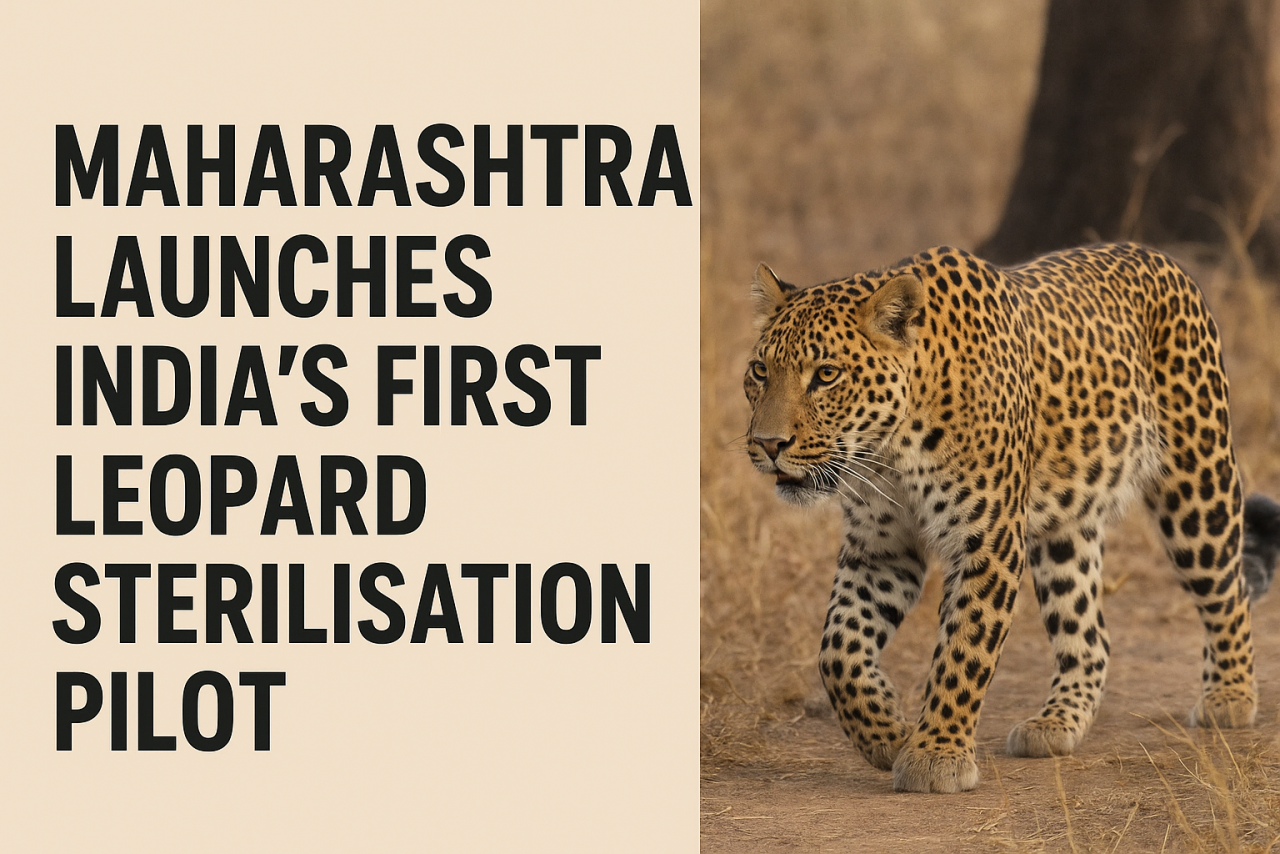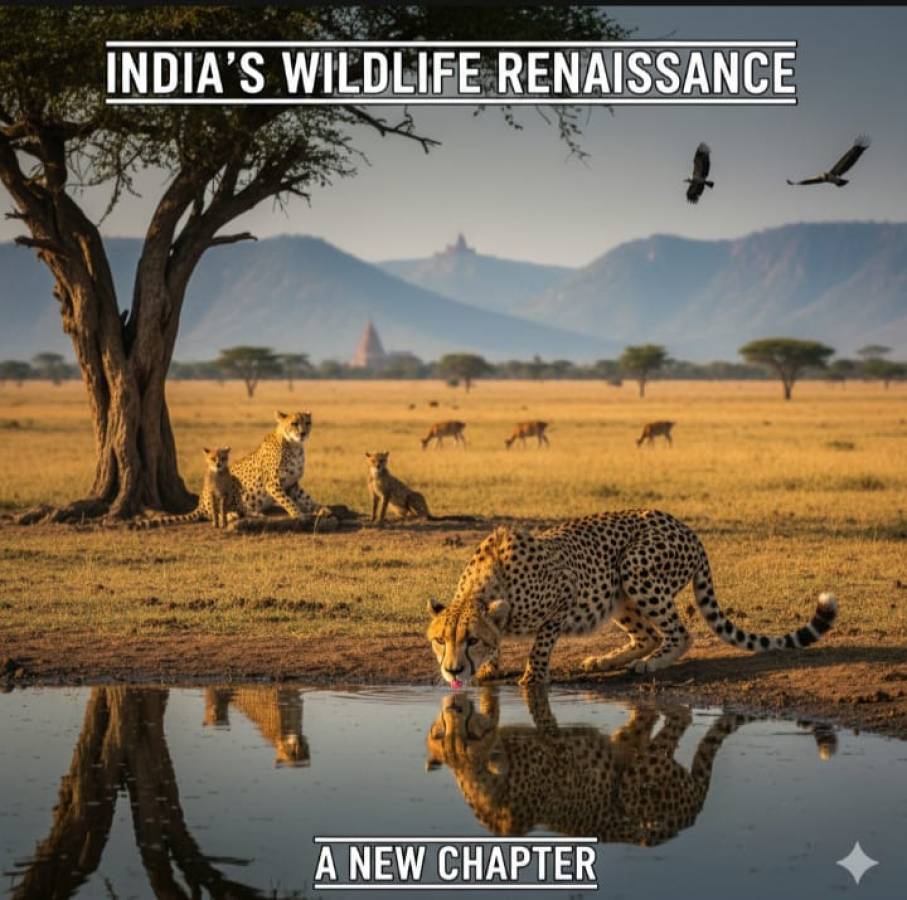
India, a land of breathtaking landscapes and vibrant cultures, is also a treasure trove of biodiversity. As one of the world’s 17 megadiverse nations, India is home to nearly 8% of the planet’s recorded species, including over 45,000 plant species and 91,000 animal species. From the towering Himalayas to the serene backwaters of Kerala, from the dense forests of the Western Ghats to the arid expanses of the Thar Desert, India’s ecosystems are as diverse as its people. This incredible natural wealth is not just a source of national pride but a cornerstone of ecological balance, cultural identity, and economic sustainability. Recognizing this, India has developed a comprehensive approach to biodiversity conservation, blending traditional wisdom, scientific innovation, and community-driven initiatives to safeguard its natural heritage.
A Cultural Legacy of Conservation
India’s conservation ethos is deeply embedded in its cultural and spiritual traditions. For centuries, nature has been revered as sacred, with forests, rivers, and animals often personified as deities. Concepts like Ahimsa (non-violence) and Vasudhaiva Kutumbakam (the world is one family) have fostered a profound respect for all living beings. Sacred groves, community-managed forests, and traditional practices like crop rotation and water harvesting are living examples of this harmonious relationship between humans and nature.
However, the colonial era brought exploitation, as forests were cleared for timber and land was repurposed for commercial agriculture. Post-independence, India began to reclaim its natural heritage through legislation and policy-making. Landmark laws like the Indian Forest Act of 1927, the Wildlife Protection Act of 1972, and the Environment Protection Act of 1986 laid the foundation for a structured conservation framework. These efforts marked the beginning of India’s journey toward balancing development with ecological preservation.
A Strong Legal Framework: Policies for Protection
India’s commitment to biodiversity conservation is enshrined in its legal and policy frameworks. The country is a signatory to key international agreements, including the Convention on Biological Diversity (CBD), the Ramsar Convention on Wetlands, and the Convention on International Trade in Endangered Species (CITES). Domestically, the Biological Diversity Act of 2002 stands as a cornerstone of India’s conservation strategy. This legislation aims to conserve biodiversity, promote sustainable use of resources, and ensure equitable sharing of benefits derived from genetic resources.
The Act established the National Biodiversity Authority (NBA) and State Biodiversity Boards (SBBs) to regulate access to biological resources and traditional knowledge. It also mandated the creation of Biodiversity Management Committees (BMCs) at the grassroots level, empowering local communities to take an active role in conservation. This decentralized approach ensures that conservation is not just a top-down effort but a collective responsibility.
Protected Areas: Sanctuaries of Life
India has built an extensive network of protected areas, including national parks, wildlife sanctuaries, biosphere reserves, and conservation reserves. As of 2023, the country boasts over 100 national parks and 550 wildlife sanctuaries, covering approximately 5% of its land area. These protected zones serve as vital habitats for endangered species like the Bengal tiger, Indian elephant, Asiatic lion, and one-horned rhinoceros.
One of India’s most celebrated conservation successes is Project Tiger, launched in 1973. This initiative not only revived the dwindling tiger population but also underscored the importance of preserving entire ecosystems. Similarly, Project Elephant, initiated in 1992, focuses on protecting elephant habitats and mitigating human-elephant conflicts. More recently, the reintroduction of cheetahs in Kuno National Park has marked a historic step toward restoring India’s lost biodiversity.
Community-Led Conservation: The Power of Participation
India’s conservation strategy places a strong emphasis on community involvement. Indigenous and tribal communities, with their deep-rooted traditional knowledge, have been instrumental in sustainable resource management. For instance, the Bishnoi community in Rajasthan is renowned for its unwavering commitment to protecting wildlife and forests, while tribal communities in the Western Ghats have perfected agroforestry and water conservation techniques.
The Joint Forest Management (JFM) program, introduced in the 1990s, exemplifies this collaborative approach. By involving local communities in the management and restoration of degraded forests, JFM has not only improved forest cover but also created livelihood opportunities for rural populations. Similarly, the concept of Community Conserved Areas (CCAs) recognizes and supports grassroots initiatives in biodiversity conservation, ensuring that local voices are heard and valued.
Biodiversity and Climate Change: A Dual Challenge
Climate change poses a significant threat to India’s biodiversity, exacerbating habitat loss, species extinction, and ecosystem degradation. Recognizing this, India has integrated biodiversity conservation into its climate action plans. The National Action Plan on Climate Change (NAPCC) includes missions focused on sustainable agriculture, water conservation, and the preservation of the Himalayan ecosystem, all of which are closely linked to biodiversity.
The Green India Mission, for example, aims to increase forest cover, enhance ecosystem services, and boost carbon sequestration. Similarly, the National Mission for Sustainable Agriculture promotes climate-resilient farming practices that conserve biodiversity while ensuring food security. India’s pledge to restore 26 million hectares of degraded land by 2030, as part of the Bonn Challenge, further highlights its commitment to biodiversity and climate resilience.
Challenges Before Policymakers
Despite its achievements, India faces formidable challenges in biodiversity conservation. Rapid urbanization, industrialization, and infrastructure development have led to habitat fragmentation and resource depletion. Invasive species, pollution, and overexploitation of natural resources compound these issues. Additionally, climate change-induced phenomena like rising temperatures and erratic rainfall pose new threats to ecosystems and species.
To overcome these challenges, India must adopt a more integrated and inclusive approach. Strengthening the enforcement of existing laws, enhancing scientific research, and raising public awareness are critical steps. Leveraging technology, such as remote sensing and artificial intelligence, can improve biodiversity monitoring and management. Furthermore, fostering partnerships between government, civil society, and the private sector can mobilize resources and expertise for conservation.
India’s biodiversity conservation strategy must also align with the United Nations Sustainable Development Goals (SDGs), particularly Goal 15 (Life on Land). By mainstreaming biodiversity into sectors like agriculture, forestry, fisheries, and tourism, India can strike a balance between development and conservation.
A Shared Responsibility
India’s approach to biodiversity conservation is a testament to its commitment to preserving its natural heritage for future generations. By blending traditional wisdom with modern science, empowering local communities, and aligning conservation with sustainable development, India has set a global example. However, the journey is far from over. As the country continues to grow, it must remain steadfast in its efforts to protect and restore its biodiversity. After all, the richness of India’s natural world is not just a source of pride—it is the foundation of its survival and prosperity. In the words of Mahatma Gandhi, “The Earth has enough for everyone’s need, but not for everyone’s greed.” India’s conservation efforts remind us that protecting biodiversity is not just a duty but a shared responsibility for a sustainable future.





















